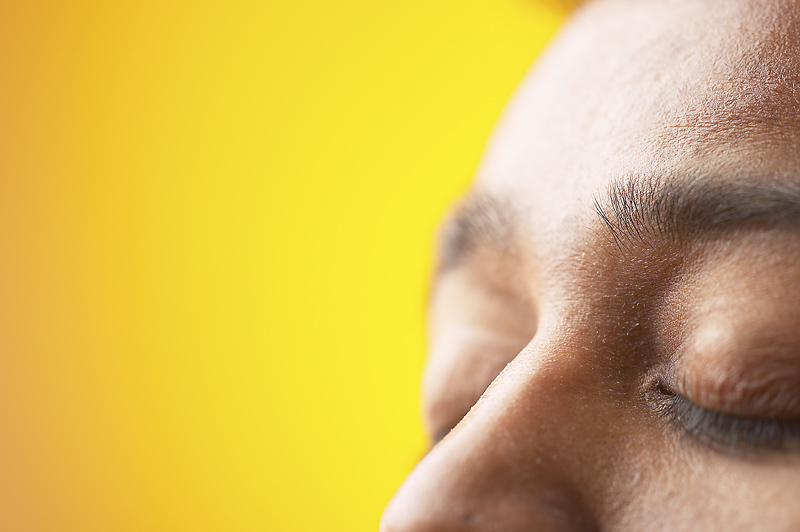
TUESDAY, Oct. 5 (HealthDay News) — The breathing masks often prescribed to treat sleep apnea can subtly alter the shape of a patient’s face with prolonged use, a new study suggests.
The common treatment, called continuous positive airway pressure (CPAP) can help relieve the interrupted breathing of sleep apnea. However, “my research found possible craniofacial change [as a result of] long-term CPAP use,” said study author Hiroko Tsuda, an assistant professor in the general oral clinic at Kyushu University Hospital in Japan.
Tsuda, who conducted his work out of the department of oral health sciences at the University of British Columbia in Vancouver, reports on the findings in the October issue of Chest.
The authors point out that CPAP therapy is the first line of therapy for most patients diagnosed with obstructive sleep apnea, which is characterized by an upper airway narrowing that blocks airflow and, in turn, prompts continual sleep disruption.
Typically such treatment is prescribed for long-term use, and involves the wearing of a full-face mask or nose mask during sleep to drive continuous pressure through the airways and keep them open and maintain unobstructed breathing.
Though often very effective, this technique for dealing with the most common form of sleep apnea is, however, already known to prompt side effects ranging from skin abrasions and a stuffy nose to dry mouth and abdominal bloating (from excess swallowing of air).
But to explore the specific question of whether CPAP use might also cause structural facial changes, the authors focused on 46 Japanese sleep apnea patients who were being treated at Kirigaoka Tsuda Hospital’s Sleep Center in Japan between 2005 and 2006.
All the patients (nearly 90 percent of whom were men) had been undergoing CPAP therapy for a minimum of two years, with an average treatment period of almost three years.
X-rays were conducted to assess facial structure with respect to the patients’ facial height, jaw placement and tooth positions.
Tsuda and his colleagues found that despite the fact that none of the patients had themselves reported noticing any facial changes, changes were nonetheless apparent.
The authors observed a reduction in the prominence of both the upper and lower jaws, as a result of shifting dental arches and incisor tooth placement.
However, the team concluded that for now the benefits of CPAP for sleep apnea patients outweigh concerns raised by the potential for what appears to be a risk for relatively minor facial structure changes.
“I [would] never say that CPAP users should stop using their CPAP because of this side effect,” Tsuda stressed.
Nevertheless, “further investigation is required,” he said, which might result in design changes to the CPAP masks.
Meanwhile, “I think CPAP users should [have] this information [about] possible side effects,” Tsuda said.
Dr. Jordan S. Josephson, a sinus, snoring and sleep apnea specialist at Lenox Hill Hospital in New York City, expressed ambivalence about CPAP in general.
“I think CPAP is like a band-aid for sleep apnea,” he said. “It can be a good short-term answer. But it does not resolve the real issues that are causing the sleep apnea in the first place. It’s like putting a spare tire on your car when you blow it out. They always tell you not to ride on the spare tire indefinitely and to get the original tire fixed. So if sleep apnea patients are on CPAP and they’re overweight, they still need to lose weight. And if they have allergies or sinus infections ultimately they really need to deal with that.”
“So, overall my reaction to this finding is ‘Wow, finally someone looked into this’,” Josephson added. “And I’m not surprised. For a lot of reasons, this treatment is not easily tolerated by a lot of patients and this is just another reason that it may not be best long-term answer for the underlying problem.”
More information
For more on sleep apnea treatment, visit the American Sleep Apnea Association.

